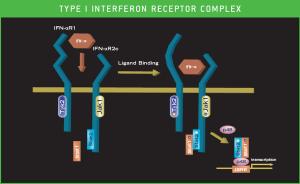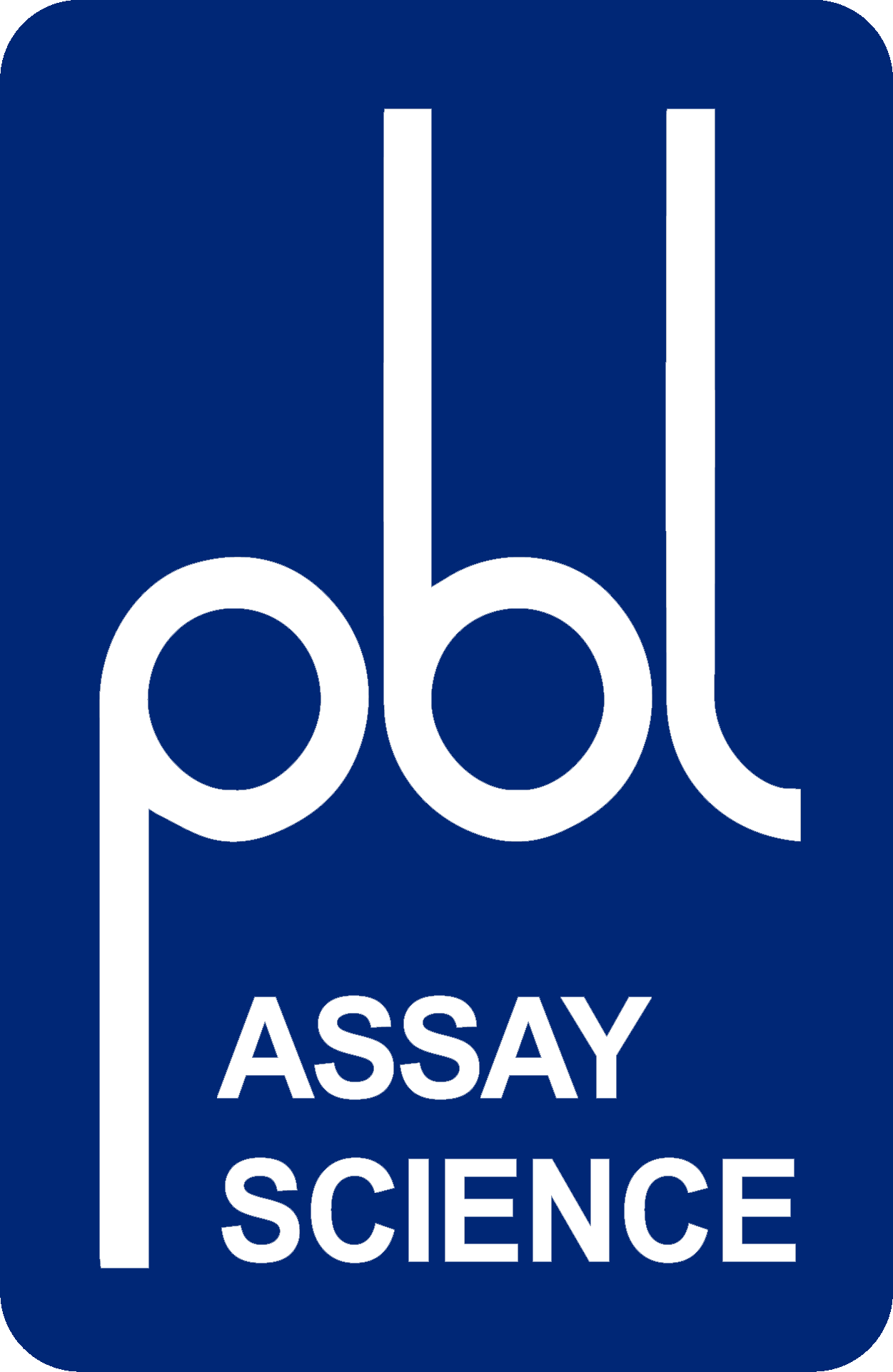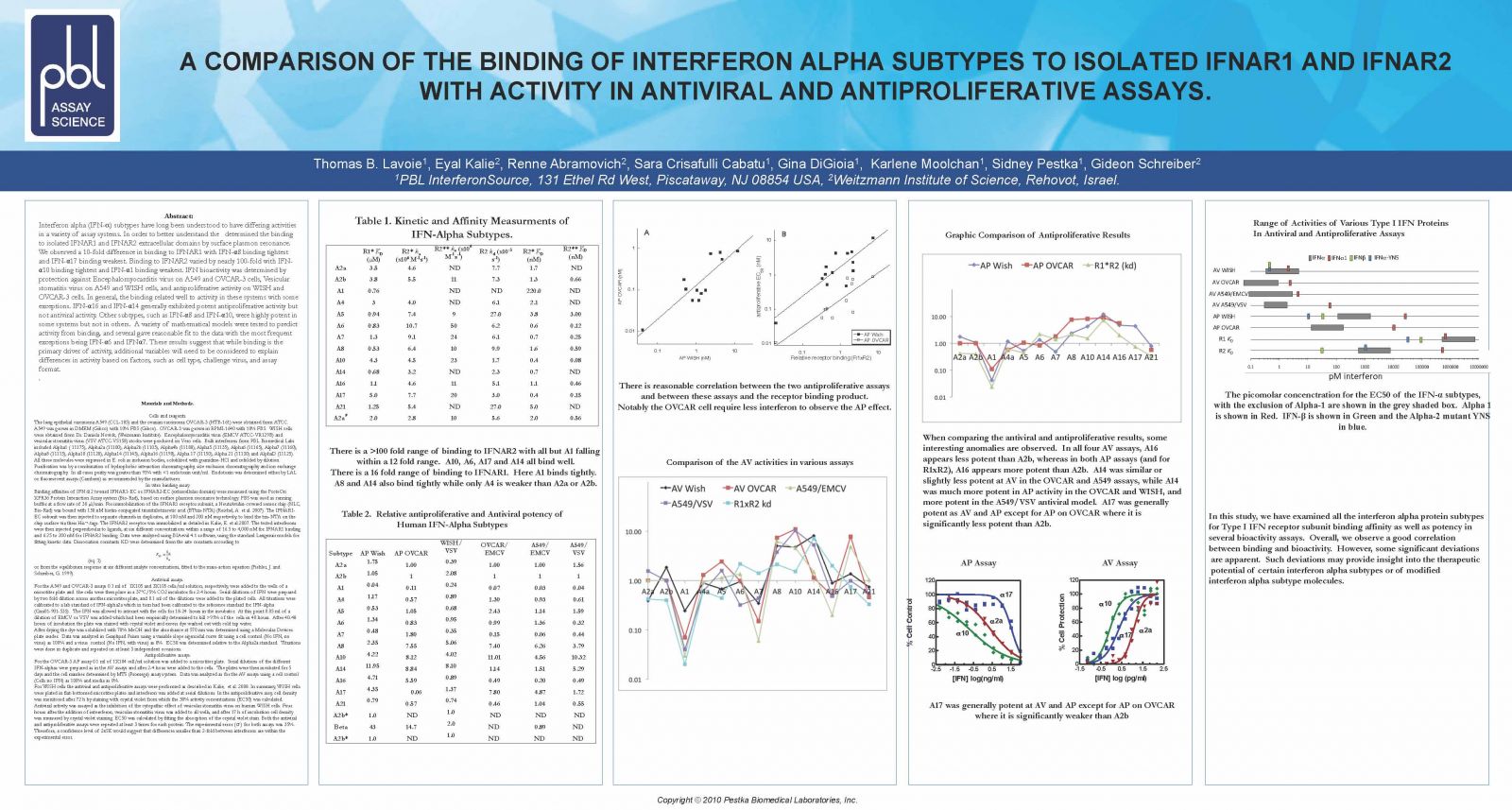
A Comparison of the Binding of Interferon Alpha Subtypes to Isolated IFNAR1 and IFNAR2 with Activity in Antiviral and Antiproliferation Assays
Abstract:
Interferon alpha (IFN-α) subtypes have long been understood to have differing activities in a variety of assay systems. In order to better understand the determined the binding to isolated IFNAR1 and IFNAR2 extracellular domains by surface plasmon resonance. We observed a 10-fold difference in binding to IFNAR1 with IFN-α8 binding tightest and IFN-α17 binding weakest. Binding to IFNAR2 varied by nearly 100-fold with IFN-α10 binding tightest and IFN-α1 binding weakest. IFN bioactivity was determined by protection against Encephalomyocarditis virus on A549 and OVCAR-3 cells. Vesicular stomatitis virus on A549 and WISH cells, and antiproliferative activity on WISH and OVCAR-3 cells. In general, the binding related well to activity in these systems with some exceptions. IFN-α16 and IFN-α14 generally exhibited potent antiproliferative activity but not antiviral activity. Other subtypes, such as IFN-α8 and IFN-α10, were highly potent in some systems but not in others. A variety of mathematical models were tested to predict activity from binding, and several gave reasonable fit to the data with the most frequent exceptions being IFN-α6 and IFN-α7. These results suggest that while binding is the primary driver of activity, additional variables will need to be considered to explain differences in activity based on factors, such as cell type, challenge virus, and assay format. (Click download for a PDF of the image below)

Related Article
Antiviral Activities of Human IFN-Alpha Subtypes on Different Cell Lines
Read Article
